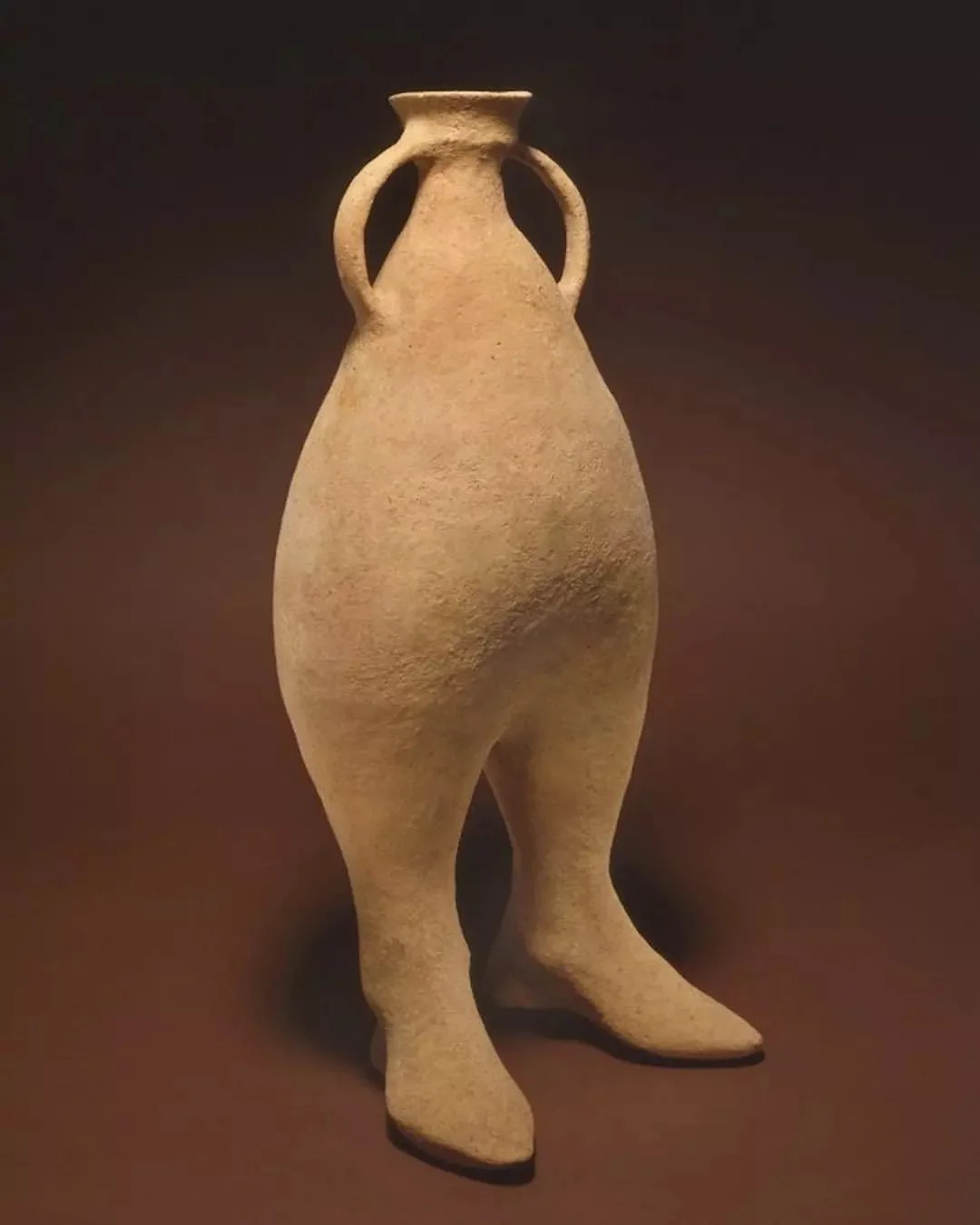
The human contours of the 3,000-year-old ceramic hollow vessel from northern Iran equally suggest male and female. Short, sturdy legs and large feet allow the vessel to stand without support. The rounded, pear- shaped thighs accentuate the genital region with which the thighs were, for ancient peoples, synonymous. For the thigh’s great muscles bind and move the femur, the longest, strongest bone in the body and the one with the most marrow, or “sap.” The word femur derives from a Greek root meaning “that which engenders” and the thigh signified life, seed and procreation (Onians, 182). Thighbones, in particular, were sacrificed to the gods of ancient Greece, and in many cultures the thigh was associated with divination and the swearing of oaths. As a half-formed infant the god Dionysus was removed from his dead mother’s womb by his father Zeus, who sewed the baby into his thigh until he was ready to be delivered (Ovid, 64ff). The Hebrew Scriptures portray the thigh as an organ of generation, if not a euphemism of the genitals.
